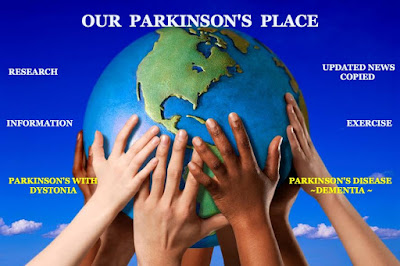Friends and family gathering
Did you hear the one about the three Parkinson’s peeps who had weekend getaways? One went to the ocean with their family, one went to the mountains with their caregiver, and one went to a neighboring town to visit friends. In each case, the patients, families and caregivers returned home refreshed. What’s the punchline? Short getaways can give you more quality of life. But you know that.
It is especially helpful to the patient — and the caregiver — to socialize. Invite people over or go visit them. Play Uno or Pinochle or Mexican Train. Just enjoy yourself with others. My Burt always perked up when a friend visited. And so did I.
Some of the following information comes from the American Parkinson’s Disease Association (APDA), and the web.
What is atypical Parkinson’s disease?
Parkinsonism is a term that describes a group of symptoms, including resting tremor, stiffness and slowness. This group of symptoms reflects a problem with a part of the brain called the basal ganglia. Parkinsonism can be caused by many different diseases — the most common of which is Parkinson’s disease. However, there are other diseases that can also lead to parkinsonism.
Since these diseases mimic Parkinson’s disease, they are referred to as atypical Parkinson’s disease. Usually, this designation refers to other neuro-degenerative diseases, Sometimes, atypical Parkinson’s disease can refer to non-degenerative causes of parkinsonism, such as multiple strokes.
As a rule, dopamine replacement therapy (e.g., Sinemet) does not work as well for the causes of atypical Parkinson’s disease compared to “typical” Parkinson’s. Also, depending upon the specific cause, atypical Parkinson’s disease leads to unique problems (e.g. low blood pressure, myoclonus) that are uncommon in those with typical Parkinson’s, and require different treatments, according to Oren Levy, MD; Division of Movement Disorders, Department of Neurology, Columbia University School of Medicine.
Dystonia is a movement disorder in which a person’s muscles contract uncontrollably. The contraction causes the affected body part to twist involuntarily, resulting in repetitive movements or abnormal postures. Dystonia can affect one muscle, a muscle group or the entire body.
Dyskinesia is a difficulty or distortion in performing voluntary movements, which often occurs as a side effect of long-term therapy with levodopa, and from prolonged use of certain anti-psychotics.
Dystonia vs. Dyskinesia in Parkinson’s Disease
Dystonia is a prolonged contraction in a particular muscle or increased muscle tone that results in abnormal posturing or a muscle spasm ... Dyskinesia, on the other hand, is more like a rhythmic contraction of large muscle groups, often described as a rolling or writhing motion.
Parkinson’s vs. Essential Tremor
Essential tremor causes involuntary tremors when performing a task. Patients with essential tremor generally do not “shake” when they are at rest.
Parkinson’s patients do not always have tremors. However, if tremors exist, they are resting tremors. When a PD patient performs a task, the tremors generally stop. That is why it can be important to choose daily activities that one enjoys. Singing, playing an instrument, marching to the beat of music, dancing and so on. These actions can be fun, as well as therapeutic. Don’t worry about your skills for doing them, just do them.
Be kind to each other and to yourselves, and keep looking up!
http://www.vvdailypress.com/news/20180119/visiting-with-friends-and-family-is-healthy-for-all


No comments:
Post a Comment